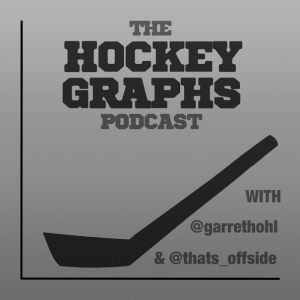On Monday, Kyle Alexander and CAustin (aka the Puckologist) wrote a post on Raw Charge titled “It’s still okay for an NHL team to draft goaltenders.” This is a topic that isn’t exactly new in the hockey analytics community – on this site alone Garret and myself have written a few posts about how unpredictable goalies are and the general consensus in the hockey analytics community being that goalies are simply not worth drafting in the early rounds of the draft, due to the variability on their results compared to other skaters (particularly forwards).
The Raw Charge guys in their post don’t totally disagree, but do think the talk of avoiding goalies is a bit exaggerated by some, concluding:
However, the gap between goalie drafting and forward drafting isn’t nearly as stark as it’s been made out to be. It’s much more worthwhile to make drafting and development at all positions better than to attempt to specialize in elite forwards to the exclusion of other positions.
Essentially, the Raw Charge guys argue:
1. The Gap between skaters and goalies’ success and failure rates isn’t as big as people think – most evaluative measures used in such studies disfavor goalies by using metrics such as GP by a certain age, where goalies rarely get opportunities to meet such thresholds.
2. The response to whatever gap there actually is should be to try and improve goalie evaluation – similar to how Swedish and Finnish goalie federations’ improved early goalie training to improve their goalie crop – rather than to eschew goalies altogether.
3. The failure of goalies may also have to do with poor development processes rather than bad evaluation.
While all three points do have merit, I think they’re both quite a bit overstated.
Continue reading →








